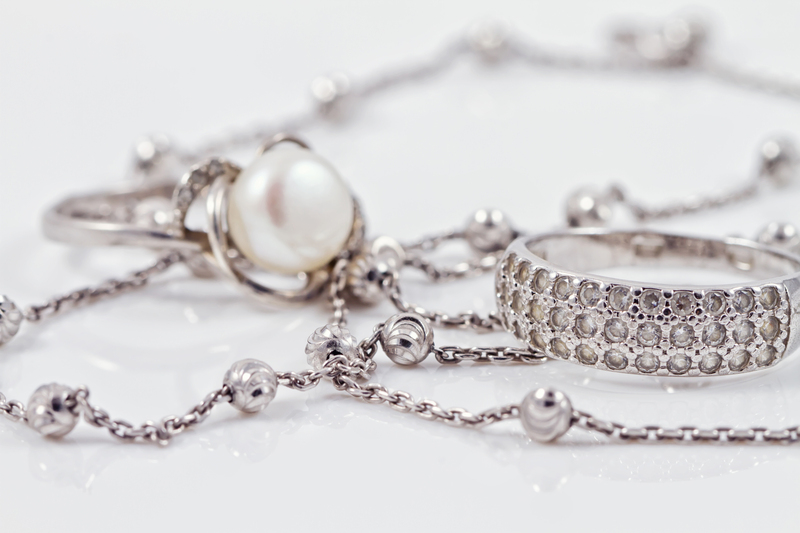Don't Let Storage Ruin Your Sofa: Here's How to Protect It
Your sofa is one of the most important pieces of furniture in your home. Whether it's a plush family couch, a vintage loveseat, or a sleek sectional, protecting your sofa during storage is crucial if you want it to stay in pristine condition. Improper storage can lead to damage such as mold, pests, saggy cushions, scratches, and even structural problems.
In this comprehensive guide, we'll teach you effective strategies to prevent storage from ruining your sofa. Learn the best practices, tricks, and tips for keeping your couch safe in storage. By the end, you'll have all the knowledge you need to ensure your sofa comes out of storage looking just as good as when it went in.
Why Proper Sofa Storage Matters
Many people underestimate the effects a storage environment can have on furniture. Sofas, with their combination of frame, fabric, foam, and sometimes even electronic components, are especially vulnerable. Moisture, temperature fluctuations, rodents, and dust can compromise the integrity of your couch.
- Avoid Costly Repairs: Preventing damage saves you money down the road.
- Maintain Value: Especially if you plan to sell or gift your sofa in the future.
- Preserve Sentimental Pieces: Family heirlooms and vintage pieces require extra care.
- Hygiene and Health: Mold, pests, and dust can make a sofa unsafe to use when it comes out of storage.

Step-By-Step: How to Store Your Sofa Properly
1. Prepare Your Sofa for Storage
- Clean Thoroughly: Start by vacuuming your sofa to remove dust, crumbs, and debris. Use a fabric cleaner for upholstery, or leather cleaner for leather surfaces. Make sure it is completely dry before moving to the next step.
- Disassemble If Possible: Remove legs, cushions, and any detachable parts. Store these components separately but nearby to prevent loss.
- Check for Repairs: Tighten loose screws, glue any small wood splits, and sew minor fabric tears. Small issues can worsen during storage.
2. Choose the Right Storage Location
Not all storage options are created equal. The right environment can dramatically extend your sofa's lifespan.
- Climate-Controlled Storage Units: These facilities regulate temperature and humidity, reducing the risk of mold, mildew, and fabric deterioration.
- Clean & Dry Basements: If budget is a concern, a clean, dry basement might suffice, but beware of potential dampness or pests.
- Self-Storage Units: Always inspect the cleanliness and security features before signing a contract.
3. Protect Your Sofa from Elements
Even the best storage unit can't protect your sofa if you don't provide adequate covering and support.
- Furniture Covers: Use breathable covers such as cotton sheets to keep dust and pests away. Avoid plastic wrap--it traps moisture and can cause mold or mildew.
- Elevate Your Sofa: Place the sofa on wooden pallets or blocks to prevent contact with the ground. This step protects against potential flooding or dampness.
- Don't Stack Items: Never stack boxes or objects on top of your stored sofa. Prolonged pressure can deform cushions and frames.
4. Arrange Correctly for Airflow
- Leave Space: Avoid pushing your sofa flush against walls. Leaving several inches around it ensures air can circulate, minimizing mold growth risk.
- Allow Access: Store with enough room that you can inspect and air out your sofa periodically during storage.
Special Considerations for Different Sofa Materials
Fabric Sofas
- Ensure fabric is completely clean and dry before storage to prevent stains from setting and mold from developing.
- Use fabric-safe cleaners and avoid harsh chemicals that could leave residue.
- Choose a breathable cover to avoid trapping moisture.
Leather Sofas
- Apply a leather conditioner beforehand to prevent cracking.
- Store away from direct sunlight to prevent fading.
- Check monthly for dryness and re-condition as needed.
Wood-Framed Sofas
- Consider treating wood components with a furniture wax or oil before storage for extra protection.
- Keep dry and monitor humidity levels to avoid wood warping.
Sectionals and Modular Sofas
- Label parts and keep small connectors or screws in clearly marked bags.
- Cover individually and do not tightly strap modular sections together, as this can cause pressure damage.
Best Practices for Long-Term Storage
Inspect Regularly
- Visit your storage unit at least twice a year to check for mold, pests, or water damage.
- Open covers briefly to air out and allow moisture to escape.
Pest & Mold Prevention
- Consider placing moisture absorbers or silica gel packets around the sofa.
- Use natural pest repellents, such as cedar blocks or lavender sachets, inside and around the cover.
Insurance and Security
- Ask your storage facility about insurance options for stored furniture.
- Take clear, detailed photos of your sofa before storing for easy claims if something goes wrong.
- Always lock your storage unit and avoid sharing the access code.
What NOT to Do When Storing Your Sofa
- Don't Use Tight Plastic Wrap: It traps moisture and leads to mold, mildew, and odor issues.
- Don't Store in Damp Basements or Garages: Fluctuating temperatures and high humidity will damage fabrics and frames.
- Don't Forget to Clean Before Storage: Stains and crumbs can set in, attract pests, or become impossible to remove over time.
- Don't Stack Items On Top: Excess weight can permanently dent cushions and damage internal supports.
- Don't Ignore Small Repairs: Tiny issues can worsen during storage, leading to more expensive fixes later.
How to Move Your Sofa into Storage Safely
- Get help--sofas are heavy and awkward. Recruit a friend or consider professional movers.
- Wrap with a moving blanket during transport to protect from bumps and scrapes.
- Use furniture sliders or dollies to prevent damaging legs and frames.
- If possible, transport in a closed vehicle or covered truck to shield from the elements.
- Once placed in its storage location, double-check stability and confirm it's not pressing against walls or other objects.
Retrieving Your Sofa from Storage: What to Expect
When you're ready to bring your couch back out, follow these steps for a smooth transition:
- Remove and inspect all covers and bags.
- Give the sofa a thorough vacuum and spot-clean as needed.
- Allow it to air out for several hours, preferably outdoors or in a well-ventilated room.
- Check for any pest, mold, or water damage before bringing it into your living space.
- Reassemble legs, cushions, and other parts if disassembled for storage.
- If you notice any odor, sprinkle with baking soda and vacuum after letting it sit for a few hours.

Frequently Asked Questions About Storing Sofas
Can I store my sofa in a garage?
Generally, storing a sofa in a garage isn't recommended due to high humidity, temperature swings, and the risk of insects or rodents. If no alternatives exist, use breathable sofa covers, elevate the sofa, and check frequently.
How long can I safely store a sofa?
With proper sofa protection techniques, your couch can stay safe for months or even years. Aim for a climate-controlled storage unit for long-term storage.
Should I store my sofa upright or flat?
Always store a sofa on its feet or legs as it is designed to sit in your home. Never rest it on its side or back, as this can warp the frame and damage internal supports.
Is it worth getting sofa storage insurance?
If your sofa is valuable or irreplaceable, insurance is a wise choice for peace of mind. Most storage facilities offer options tailored for furniture.
Summary: Protecting Your Sofa in Storage
Don't let storage ruin your sofa! The key is proper preparation, using a safe and clean storage environment, and employing protective measures like covers and elevation. Remember to check on your sofa periodically, and always clean it thoroughly before and after storage.
- Choose climate-controlled storage for best results.
- Use breathable, fabric covers--avoid plastic wrap!
- Elevate your sofa to prevent moisture damage.
- Leave space for air circulation around the couch.
- Never stack items on the sofa or store it upside-down.
- Clean and repair before storing--and after retrieval.
With these best practices for sofa storage, you can rest assured your furniture investment will remain beautiful and functional for years to come. Store smart now, and your future self will thank you every time you lounge in comfort at home!



